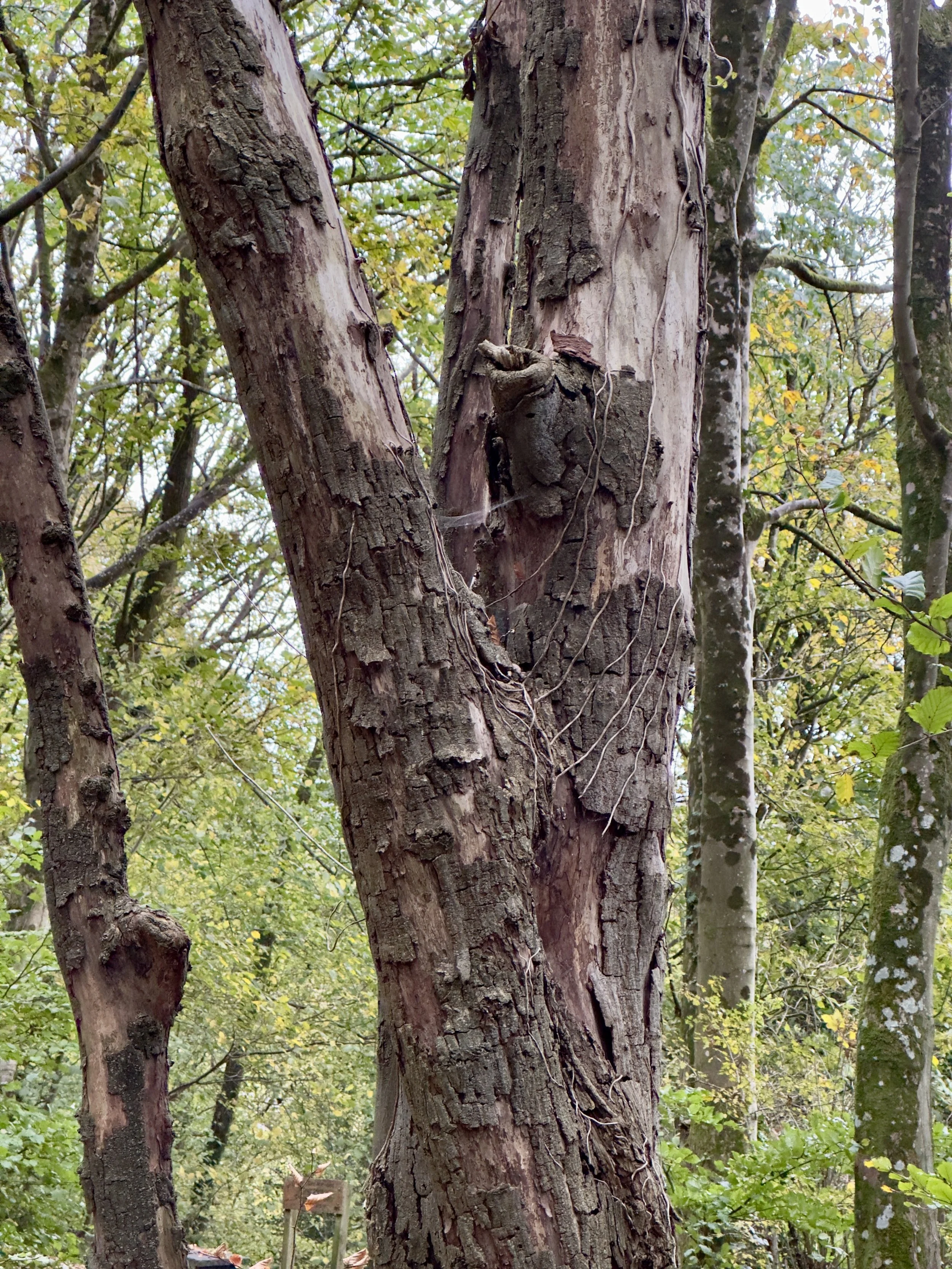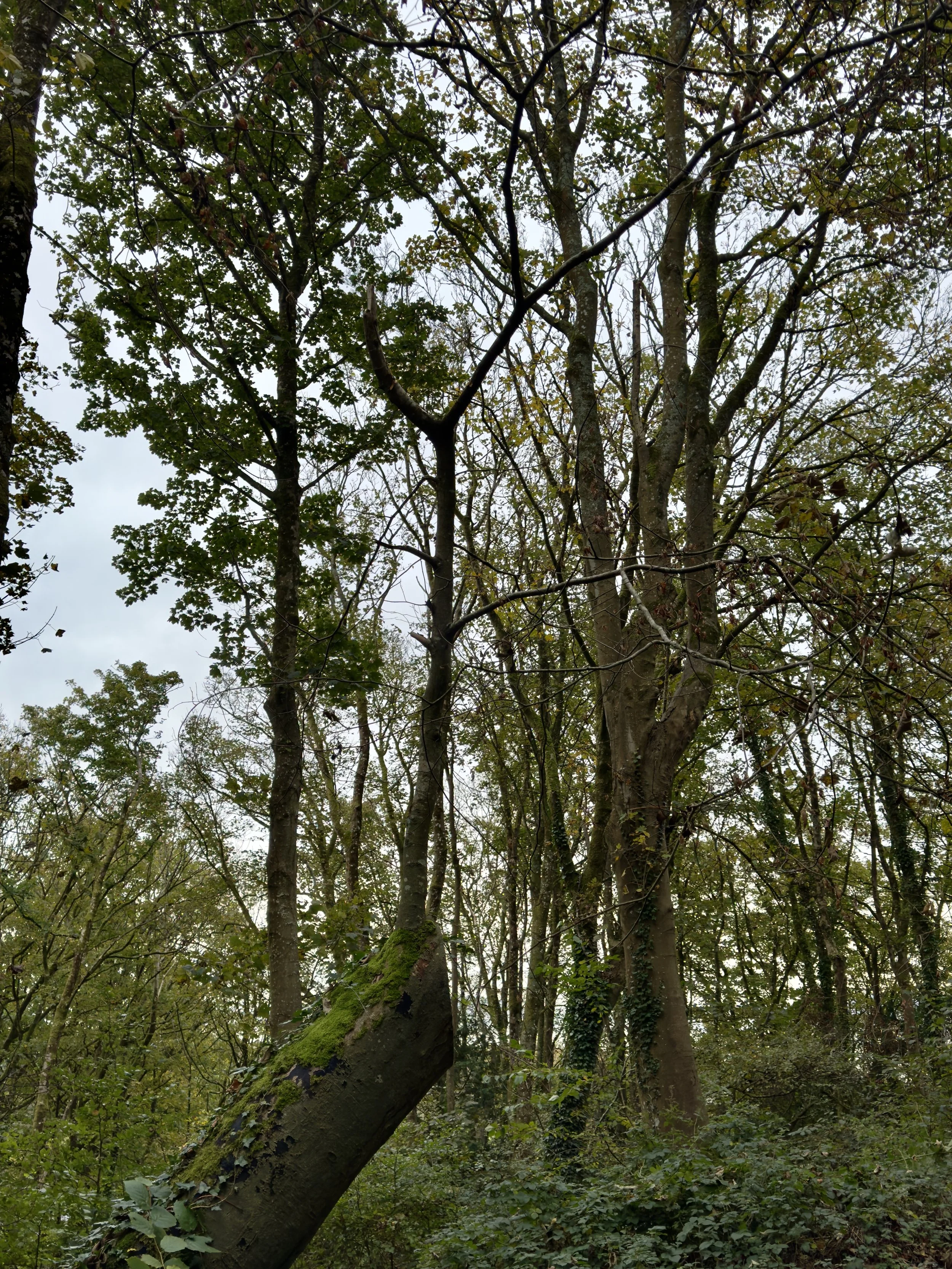Garden Observations: Can dead trees be used in the garden?
The trees in this forest that have succumbed to whatever has caused them to wither and fall away from this world play as important a role as the live ones, providing habitat and decay for the entire ecosystem of this place.
Where there is death there is life, and this is the cycle that continues on, even long after our time comes to an end.
I wonder if we can replicate this in our own gardens. When a tree dies, shall we replace it? Maybe not. Or can we design with 'dead' trees, planting something that isn't for us (the blossom, foliage, etc.) but something that is dead and decays for the use of animals, insects, and plants? Can the decay of the tree and the branches falling on the border offer nutrients for the soil and decomposers: ants, termites, beetles, and more?
In this instance, where a tree had fallen and was then cut to make the path safe (human intervention), a new tree (possibly an example of an epicormic shoot) uses the original trunk as its foundation. Even here though, it wasn't meant to be, and the second attempt had failed. Yet even "failed" isn't the right word, as in its short-lived 'second' life, it has helped provide structure for ivy to grow up, birds to perch and feed, and a wider variety of offerings for the ecosystem to remain in balance.


